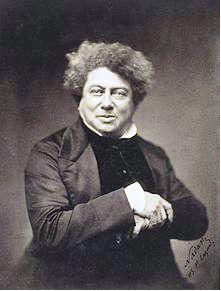Colbert has an intense hatred for M. Fouquet, the king's superintendent of finances, and has resolved to use any means necessary to bring about his fall. With the new rank of intendant bestowed on him by Louis, Colbert succeeds in having two of Fouquet's loyal friends tried and executed. He then brings to the king's attention that Fouquet is fortifying the island of Belle-Ile-en-Mer, and could possibly be planning to use it as a base for some military operation against the king.
Louis calls D'Artagnan out of retirement and sends him to investigate the island, promising him a tremendous salary and his long-promised promotion to captain of the musketeers upon his return. At Belle-Isle, D'Artagnan discovers that the engineer of the fortifications is, in fact, Porthos, now the Baron du Vallon, and that's not all. The blueprints for the island, although in Porthos's handwriting, show evidence of another script that has been erased, that of Aramis. D'Artagnan later discovers that Aramis has become the bishop of Vannes, which is, coincidentally, a parish belonging to M. Fouquet. Suspecting that D'Artagnan has arrived on the king's behalf to investigate, Aramis tricks D'Artagnan into wandering around Vannes in search of Porthos, and sends Porthos on an heroic ride back to Paris to warn Fouquet of the danger. Fouquet rushes to the king, and gives him Belle-Isle as a present, thus allaying any suspicion, and at the same time humiliating Colbert, just minutes before the usher announces someone else seeking an audience with the king.
Ten Years Later (Etext 2681): As 1661 approaches, Princess Henrietta of England arrives for her marriage, and throws the court of France into complete disorder. The jealousy of the Duke of Buckingham, who is in love with her, nearly occasions a war on the streets of Le Havre, thankfully prevented by Raoul's timely and tactful intervention. After the marriage, though, Monsieur Philip becomes horribly jealous of Buckingham, and has him exiled. Before leaving, however, the duke fights a duel with M. de Wardes at Calais. De Wardes is a malicious and spiteful man, the sworn enemy of D'Artagnan, and, by the same token, that of Athos, Aramis, Porthos, and Raoul as well. Both men are seriously wounded, and the duke is taken back to England to recover. Raoul's friend, the Comte de Guiche, is the next to succumb to Henrietta's charms, and Monsieur obtains his exile as well, though De Guiche soon effects a reconciliation. But then the king's eye falls on Madame Henrietta during the comte's absence, and this time Monsieur's jealousy has no recourse. Anne of Austria intervenes, and the king and his sister-in-law decide to pick a young lady with whom the king can pretend to be in love, the better to mask their own affair. They unfortunately select Louise de la Valliere, Raoul's fiancee. While the court is in residence at Fontainebleau, the king unwitting overhears Louise confessing her love for him while chatting with her friends beneath the royal oak, and the king promptly forgets his affection for Madame. That same night, Henrietta overhears, at the same oak, De Guiche confessing his love for her to Raoul. The two embark on their own affair. A few days later, during a rainstorm, Louis and Louise are trapped alone together, and the whole court begins to talk of the scandal while their love affair blossoms. Aware of Louise's attachment, the king arranges for Raoul to be sent to England for an indefinite period.
Since Aramis's singular transformation into a confessor of the order, Baisemeaux was no longer the same man. Up to that period, the place which Aramis had held in the worthy governor's estimation was that of a prelate whom he respected and a friend to whom he owed a debt of gratitude; but now he felt himself an inferior, and that Aramis was his master. He himself lighted a lantern, summoned a turnkey, and said, returning to Aramis, "I am at your orders, monseigneur." Aramis merely nodded his head, as much as to say, "Very good"; and signed to him with his hand to lead the way.

































